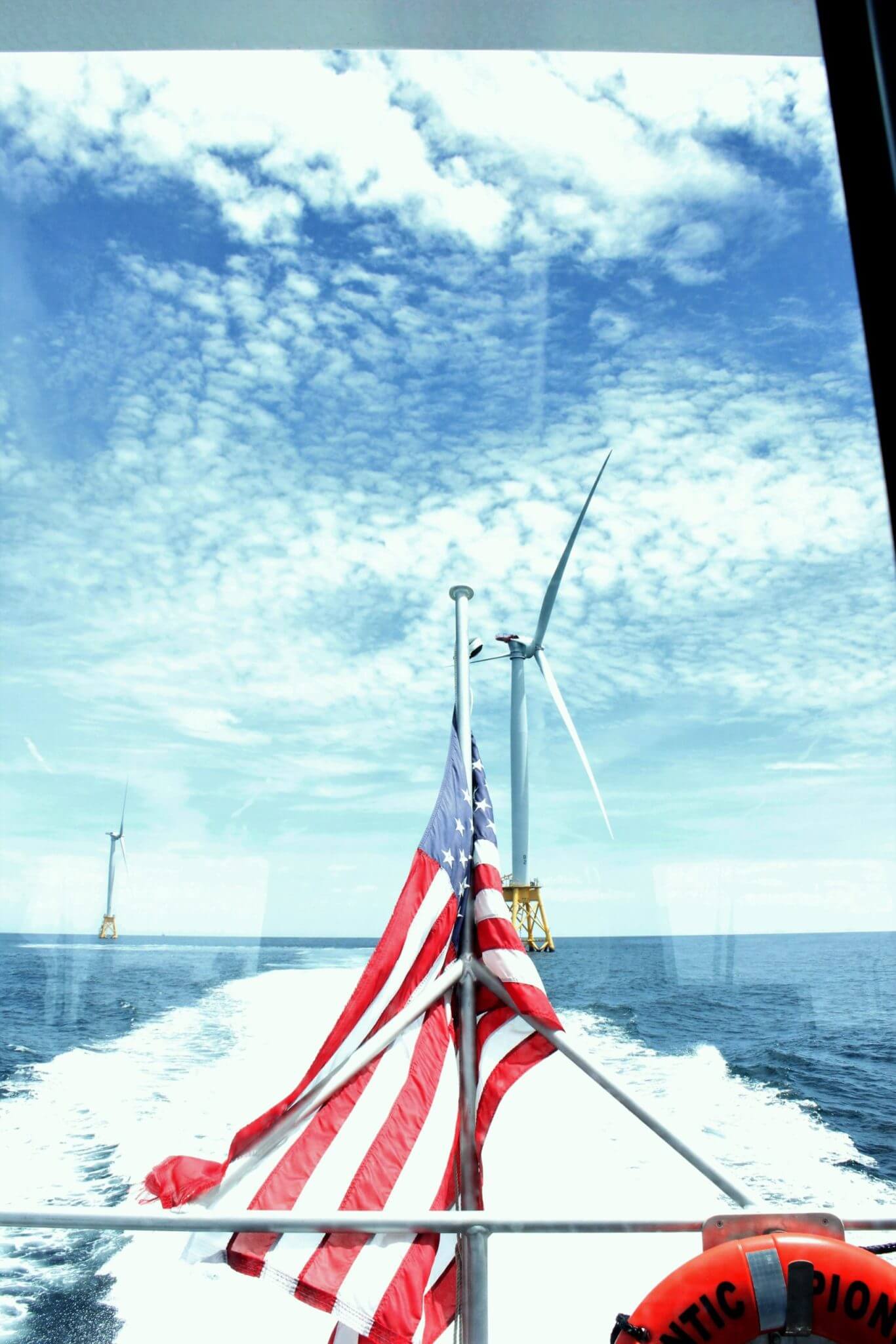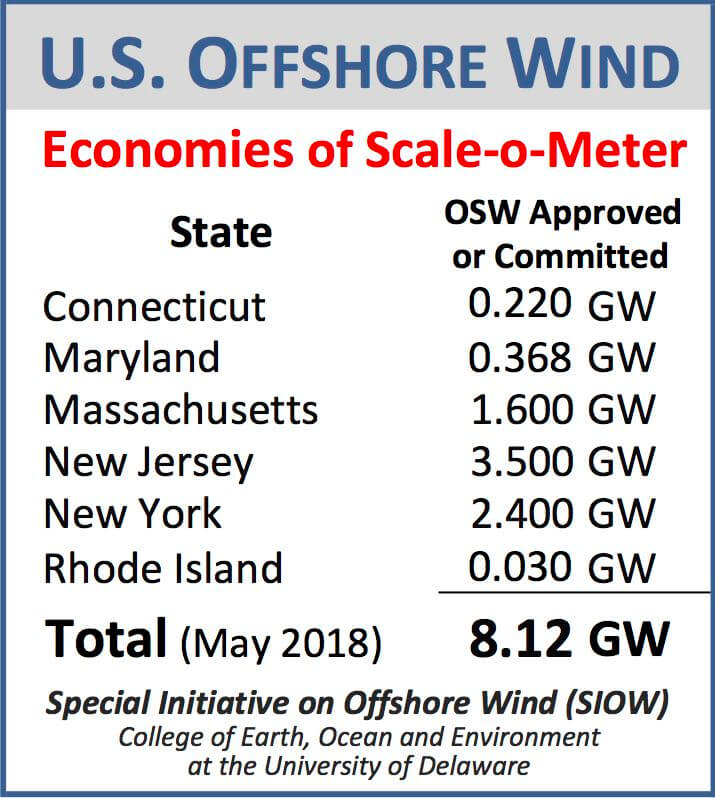Booming offshore wind market to power jobs, new U.S. heavy industry
At an energy panel in Houston last week, industry and policy leaders highlighted the road map and milestones marking lift-off for the country’s burgeoning offshore wind (OSW) industry. There are now 8 gigawatts (GW) of firm commitments in six Northeast states and a project pipeline of almost 25 GW— enough to power millions of American homes.
Bottom line: Tapping into this enormous home-grown energy resource promises to deliver tens of thousands of U.S. jobs, market-competitive clean electricity for U.S. coastal consumers, and high value for U.S. companies in the supply chain.
Experts said U.S. OSW has achieved the scale needed to light up boardwalks and boardrooms up and down the East coast with clean wind power from the sea. To generate this electricity, a new U.S. heavy industry is taking shape to install, connect and service offshore wind turbines and infrastructure – putting OSW “steel in the water.” America’s OSW industry will be supported by a supply chain that partners OSW developer initiative with expertise from U.S. oil & gas firms, onshore wind manufacturers and European OSW leaders, maximizing U.S. jobs, synergies and value.
Over the past two years, the U.S. industry has made dramatic advances in policy commitments and investor confidence. We no longer wonder if OSW will make it to America’s shores– it has already arrived and growth is accelerating, with market momentum and utility-sized commitments to scale. Panelists said U.S. offshore energy and OSW industry leaders are working to ensure U.S. companies bring their full expertise to bear.
Roy Francis, Vice President of Business Development for Gulf Island Fabrication, a Texas-based offshore energy construction firm, noted his company’s new strategic relationship with OSW developer Bay State Wind and German steel pipe maker EEW, which will help advance a renewable energy supply chain that will create more jobs in Massachusetts.
“The European offshore wind market is 27 years old,” he said. “We are taking the best from the mature European industry and pairing it with American know-how.”
“The industry is moving at a phenomenal pace,” said Walter Cruikshank, Acting Director at the Bureau of Ocean Energy Management (BOEM). “There is great industry-wide confidence in the market,” he told the panel, held in Houston during the Offshore Technology Conference. “There are strong policy commitments from the states, particularly in the Northeast and mid-Atlantic, and a strong commitment from this Administration,” he said. “We are actively working with leaseholders to move their projects forward.”
“Offshore wind is an important diversification opportunity,” said Joseph Orgeron, Special Projects Manager at Falcon Global LLC, a subsidiary of Louisiana-based SEACOR Marine and the liftboat operator that helped build the Block Island Wind Farm, the country’s first OSW project. “We’re using our assets and putting employees to work alongside local workers on the East coast. It’s all positive commerce.”
“There’s lots of room for partnership,” said Randall Luthi, President of the National Ocean Industries Association (NOIA), speaking about the synergies between OSW and the U.S. oil & gas sector. “Offshore energy service companies can build anything out in the ocean. It doesn’t matter if it’s an oil rig or a wind farm. We can, should and will continue to work together.”
“The U.S. supply chain is fantastic,” said Chris van Beek, President of Deepwater Wind. “OSW is a tremendous opportunity. We estimate that 70 percent of the capital expenditures of an offshore wind farm can be delivered by the U.S. supply chain.”
The panel cited other U.S. OSW milestones and data points:
- More than 8 GW of OSW is now approved or committed for development in six states – Connecticut, Maryland, Massachusetts, New Jersey, New York and Rhode Island. A recent study finds this will create almost 40,000 full-time U.S. jobs by 2028 and 500,000 full-time U.S. job years through 2056; supply chain synergies with U.S. oil & gas and onshore wind sectors; and synergies and overlapping expertise including project management, array cables, substations, foundations, steelwork and maintenance.
- Department of Energy (DOE) reports the project pipeline for U.S. OSW totals almost 25 GW of potential installed capacity, including 28 projects off the East and West coasts, Great Lakes and Hawaii. Along with wind turbines and towers, estimates indicate developing this scale will require 7,000 km of offshore export and array cables, 3 million tons of steel on foundations, 100 crew transfer vessels and 2 new generation jack-up vessels.
- By 2050, DOE projects 86 GW of U.S. OSW installed capacity will support 160,000 full-time U.S. jobs.
This vast new market for U.S. offshore wind power is coming into clear focus, first in the Atlantic states and then other U.S. coastal markets. With America’s tremendous offshore wind power potential, there’s good reason to be excited!






